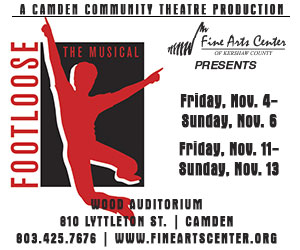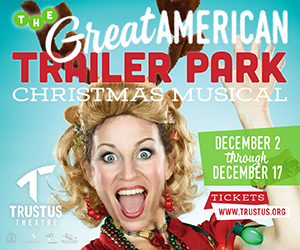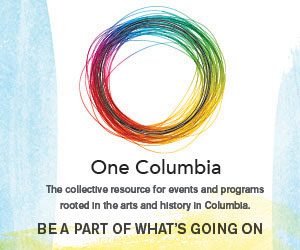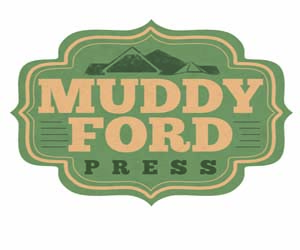Can Art Make a Difference?
By Chris Robinson
Columbia has a lot to be proud of. When I arrived here many years ago, there were few good restaurants and little to do, but promise of much more. One of Columbia’s greatest assets then was being reasonably close to the beach and history of the low country, or the mountains and progress of the upstate. The city has made good on its promises with a thriving Vista and re-emerging downtown, and the arts have played a significant role with successful venues and a great social environment. Now we stand at a critical juncture. Can we move from that great social environment, where art serves simply as a backdrop for drinks and good conversation, to a place that really looks at, cares about, evaluates, embraces, and understands good art?
Frank Gehry’s Guggenheim Museum in Bilbao, Spain has transformed a dying industrial town to an international destination, thriving community, and exemplified the arts’ ability to transform. It did so with cohesive, visionary commitment on the part of local and national government, foundations, the private sector, and the contemporary collections of the Guggenheim. Does Columbia have the interest, desire, willingness, and courage to raise the bar and reap similar benefits? There is no coalescing force organizing many desperate and unrelated activities, each simply struggling in a tough economy to keep themselves or their own organization above water, leaving little opportunity for discussion of meaning or quality.
The bigger question may be what the real role of the arts is and how willing are we to embrace and risk the ride of its force? “I don’t know much about art, but I know what I like,” or “I love that painting, but it doesn’t match my décor,” usually win out when it is time for tough decisions, and there are many concrete models of both success and failure. Should struggling arts venues be run by curators versed in quality or a business person capable of meeting the bottom line, avid supporters or qualified arts professionals, and what are the implications, assets, and liabilities of each?
We have a growing infrastructure of good museums, alternative spaces, and galleries, creative and successful local artists, and a university department ripe with internationally active artists and scholars – credited with recognition only when 500 or more miles from home, and preferably overseas. Universities are experiencing similar issues with pressure for funding and growth, related increases in tuition, competition from entrepreneurial and for-profit colleges, and cumbersome traditional infrastructures unwilling or unable to change. While most of the broader art world concentrates on the idea, content, and simply making good art in whatever form it may take, art departments still focus on the traditional structure of separate and distinct mediums, not necessarily educating thinking artists, but rather training skilled technicians, or free spirited bohemians.
It costs about $1.5 million, on average, to set up a new scientist with lab space and technological infrastructure, but there is no studio space for the arts faculty. Our graduate studios, a recent asset, are in an old Quonset hut storage facility with chain link interior walls, dusty concrete floors, and no air conditioning.
Everybody professes to understand the need and value of the arts and it would be foolish to publically say otherwise, but how many really embrace their goodness. The ones that worry me the most are those goodhearted that figure general intelligence and personal interest qualifies and empowers them to understand and influence the future of the arts. They often can and do. Many viewers still see contemporary innovation and shock and intrigue in non-objective paintings or racy and controversial objective imagery that has been around for quite some time, but often have little or no idea, or quickly dismiss, what is going on in the art world at large.
My own work is in art and technology, a controversial yet persistent stepchild of the visual arts. Now in its third generation, after continued interest and forays throughout history including the landmark 1967 Art and Technology Program at the Los Angeles County Museum of Art, which paired major artists with high tech corporations, it embraces the continuing notion that good art should have some relationship to its often complex culture. Now an ever-increasing list of artists and support organizations are exploring both the role and meaning of science and technology and taking an increasingly active role in that development. How dare artists work cooperatively or sell out to concrete versus intuitive thinking? And worse yet, sacrifice independence to work collaboratively with others? See ART+COM (http://www.artcom.de/en/home/) or United Visual Artists (http://www.uva.co.uk/) for some palatable examples. With sweeping technological development, can we afford to leave science solely to scientists? Dada alerted us to the folly of war and new technological advancements cross ground and pose questions that make fiction and fantasy pale.
Many positively feel an affinity for and ability in the arts, usually because of a family member or friends who are active in the discipline. While anyone can declare themselves an artist, how would we react if the same were said about science, law, or medicine? The pluralism of Robert Young saying, “I’m not a doctor, but I play one on TV,” while giving medical advice has gotten badly out of hand.
Robert Irwin poses that we can’t possibly be in a post-Modern world, as we have not yet fleshed out Modernism. The great sweep of Modernism offered some of the most distinctive innovations in the history of art and believed that art could and should be bold, recuperative, and prepared to save the world. I know some of the questions, but only the collective community can provide the answers that will serve us over the long term. The world often seems in dire need and Columbia could really benefit from the real power of art, but I have never believed in the National Endowment for the Arts slogan, ‘A great nation deserves great art,’ rather that you have to work for it every day.
Chris Robinson is a visual artist who is interested in the role and meaning of science and technology in contemporary culture and is a senior and co-principal investigator on US National Science Foundation funded multi-disciplinary research teams investigating the societal implications and role of images in nanoscience/technology. Robinson teaches 3D and digital imaging in the Department of Art and is a member of the nanoCenter at the USC.






.jpg)
